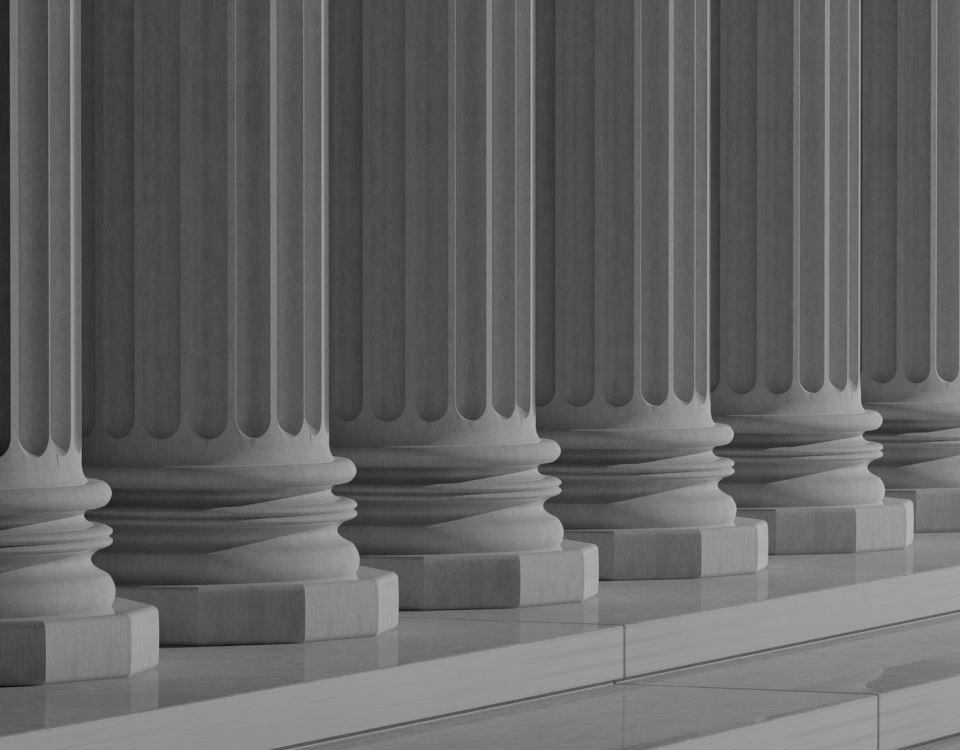
A Word or Two on the Emergencies Act
March 31, 2020
Deploying Reservists in a Crisis: The Problem with Vague and Imprecise Language
April 6, 2020Whistle-blowing – and Non-Whistle-blowing – During a Crisis
US Navy Captain Brett Crozier was apparently relieved of command of the aircraft carrier USS Theodore Roosevelt after his concerns about a possible COVID-19 outbreak on board his vessel (well, technically, the United States Navy’s vessel), which he raised with superiors in the Navy, was leaked to the press.
Technically, the reason given by the Acting Secretary of the Navy for his removal from command was that he exercised ‘poor judgment’ in not safeguarding the information in his letter, which was subsequently leaked to a newspaper. He is not accused of leaking the letter himself, although the Acting Secretary of the Navy apparently criticized Captain Crozier for creating an opportunity for it to be leaked, when he e-mailed it to 20 or 30 people (who, presumably, were appropriate recipients of such communication). Although I won’t speculate on whether the Acting Secretary of the Navy believes that Captain Crozier was the source of the leak, it is entirely possible that he was motivated by more than just the alleged ‘poor judgment’, even though that is the excuse that has been offered.
The non-disciplinary action taken against Captain Crozier, has prompted me to offer a commentary on what might arise within the Canadian Forces if something similar arose.
Imagine, if you will, that the CO of one of Her Majesty’s Canadian Ships faced a similar circumstance. For example, assume that “Commander Prudens”, in command of HMCS Calgary (and I am fairly confident that the actual CO of HMCS Calgary is not named ‘Prudens’) were to send a letter, similar in nature to that of Captain Crozier, to his superior, the Commander of the Maritime Forces Pacific (MARPAC) with the expectation that it would eventually be communicated to the Commander, Royal Canadian Navy, and the Chief of the Defence Staff. [I note, tangentially, that Captain Crozier was faulted by the Acting Secretary of the Navy for failing to raise his concerns directly with his immediate supervisor, who was embarked aboard the USS Theodore Roosevelt.]
Imagine as well that the ‘distribution list’ of this correspondence included a dozen or so persons who were appropriate recipients of such communication. Let’s also assume that this letter was somehow leaked to, say, David Pugliese at the Postmedia Network, which publishes newspapers such as the National Post and Ottawa Citizen. I am confident that David would be interested in such newsworthy communication. Finally, let’s assume that the Minister of National Defence, Chief of the Defence Staff, and their subordinates are uncertain of who actually leaked the letter to Mr. Pugliese. Certainly, a sufficiently large number of people would have had access to such a letter that they could not confidently conclude that Commander Prudens was the source of the leak (even if one or more of them might believe or suspect that he was the source). And I am also confident that, if he received the information from someone who wished to remain unnamed, Mr. Pugliese would not disclose the source of the information he received.
How might they react?
I would suggest that it would not be surprising if senior leadership – both military and political – of the Canadian Forces and Department of National Defence reacted in a manner similar to that of their American counterparts. No one likes to be undermined, even if unintentionally. And senior officials really don’t like to be embarrassed by facts, made public, that run counter to their narrative.
In the hypothetical scenario I have proposed, I have not suggested that Commander Prudens expressly or intentionally made public comments in an unauthorized fashion contrary to articles 19.36 (Disclosure of Information or Opinion) and 19.375 (Communication to News Agencies) of the Queen’s Regulations and Orders for the Canadian Forces (QR&O). In my experience, when such information becomes public, some senior CF officials can demonstrate a tendency to make ‘leaps of logic’ in their desire to blame someone for the embarrassing disclosure. However, most of those decision-makers will be at least peripherally aware that, in order to prosecute such matters under the Code of Service Discipline, some tangible evidence would be necessary. Conjecture and suspicion are just not going to cut it.
In our hypothetical scenario, even if senior decision-makers believed that Commander Prudens was the source of the leak, and even if they had some (but not sufficient) evidence of his involvement in the leak, those same decision-makers may be reluctant to proceed with Code of Service Discipline charges. They will be aware that Commander Prudens would have the right to elect trial by court martial. This would prevent them from taking ‘immediate’ disciplinary action. Commander Prudens would be assisted by the capable counsel at Defence Counsel Services and the decision-maker would be a constitutionally independent military judge. And, anyone who has been paying attention to the news relating to military law (or following this blog) will be aware that military judges are not inclined to sit idly by and be dictated to by the Canadian Forces’ chain of command.
Finally, if the chain of command proceeds with charges under the Code of Service Discipline, some administrative action may be delayed until after the disciplinary process runs its course. Of course, some discretionary decisions, such as supposed ‘temporary’ removal from command or relief from performance of military duty under either article 19.75 or 101.09 of the QR&O could be pursued even when the disciplinary matter is in its infancy.
In fact, the common methodology employed by the chain of command under Op HONOUR provides an object example of the preferences exhibited by the chain of command when dealing with matters for which they may exercise broad discretion in addressing the issue under either the Code of Service Discipline or administrative measures (or, arguably, both).
If the chain of command focuses on administrative recourse, they are able to avoid scrutiny by constitutionally independent judges, at least initially. That’s because administrative decisions – such as removal from command or the imposition of remedial measures under Defence Administrative Order and Directive (DAOD) 5019-4 – fall entirely within the discretion of CF statutory decision-makers. If Commander Prudens were subject to removal from command and/or remedial measures, and disagreed with those decisions, he would first have to grieve the decision under the supposed ‘adequate alternative remedy’ of the CF grievance process.
And the chain of command largely controls the narrative of such administrative actions. The chain of command largely controls the pace at which such decisions are made. Equally, if Commander Prudens were to grieve such decisions, the chain of command again largely controls the narrative and the pace at which the decisions are made. And, remember: the tenure of most CO positions is typically 2 years.
Conceivably, Commander Prudens could be removed from command within 24 hours of the CDS and Minister being embarrassed by the publication of the letter. It is conceivable that the initial removal from command would be characterized as ‘temporary’, even if the CDS or other statutory decision-makers had no intention of permitting Commander Prudens to return to his CO billet. Under the CDS Guidelines for Removal from Command, a ‘temporary’ removal should not last much more than a month. This permits the statutory decision-maker to initiate an Administrative Review under DAOD 5019-2 in order to permit a procedurally fair process in which Commander Prudens is provided notice of the anticipated ‘permanent’ decision, disclosure of the case against him, an opportunity to make informed representations to the eventual decision-maker, and, presumably, receive sufficiently detailed reasons for the eventual decision.
In a perfect word, this should not take longer than a month.
Regrettably, even absent the COVID-19 crisis, the Canadian Forces rarely exemplifies a perfect world. I have encountered circumstances, in my private practice, in which a CO was ‘temporarily’ removed from command for nearly a year. During this period, a formation commander eventually got around to following the CDS Guidelines and initiated a ‘Notice of Intent’ to remove the CO from command permanently. This took over six months and was characterized by significant mismanagement of the process. The formation commander eventually abandoned that course of action. Arguably, the process was abandoned because the Commander had realized that his position was indefensible for a variety of reasons, including: (i) formation commanders at two distinct levels had permitted the process to drag on well beyond the timeframe directed by the CDS; (ii) the investigation upon which the initial decision was based was significantly flawed, both procedurally and substantively; (iii) the intended removal from command was substantively unjustified; and, (iv) the so-called ‘temporary’ removal from command had achieved their desired end-state, as it had removed the CO for nearly a year. Perhaps the commander who resiled from this problematic process believed that abandoning the process would avoid adverse scrutiny of the mismanagement of that process.
A key lesson learned from such experiences is that it is not uncommon for senior CF decision-makers to abuse such processes. For example, they do not act in a timely or efficient manner. This is ironic in light of the fact that such processes are initiated due to some alleged performance or conduct deficiency on the part of the officer who is the subject of the process. Also, some decision-makers might characterize actions with indeterminate effect, such as removal from command, as ‘temporary’. Notwithstanding such nomenclature, such actions can tend to drag on for months and become, de facto, ‘permanent’: in many cases, ‘succession planning’ for command positions would effectively remove the CO from his or her billet permanently.
Even if the ‘permanent’ decision is made within a month, and even if Commander Prudens receives a facsimile of procedural fairness, the chain of command controls both the process and the narrative. More importantly, this is a largely discretionary decision, and the chain of command benefits from a robust margin of appreciation or deference from reviewing courts. It is quite likely that senior CF decision-makers are of the view that, as long as they include the ‘magical’ mantra “… I have lost confidence in your ability to command the unit effectively and efficiently …” (or words to that effect), they can be reasonably assured that a reviewing court – when and if it ever has the opportunity to review the decision – will afford the CF decision-maker robust deference. (Evidently, someone who cannot manage a removal from command process efficiently and effectively still has the discretion to impose such expectations on subordinates.)
And before a judge of the Federal Court is permitted to scrutinize such a decision, Commander Prudens must exhaust the two-tiered CF grievance process. Even when it is working efficiently – and we may safely assume that, at present, it is not – it can take two years or more for the grievance to wend its way through this process. Even if the final authority – the CDS or his delegate – finds in favour of Commander Prudens, the opportunity will be lost. Succession planning will have run its course, and he will have missed his window. Even if the CDS offers some sort of ‘compensation’ – e.g. a financially lucrative posting to NATO Headquarters or SHAPE – there is no changing the lost opportunity to command one of Her Majesty’s Canadian Ships.
And that presumes that the CDS actually grants any form of redress. After all, if Commander Prudens’ circumstances mirrored those faced by US Navy Captain Crozier, how likely would the CDS be to grant redress if the CDS supported the removal from command in the first place. And any reviewing court – if the matter actually gets that far – won’t be reviewing the actual ‘removal from command decision’, but rather, it will review the decision of the final authority in the CF grievance process, who reviewed the ‘removal from command decision’.
And, potentially (depending upon who makes the ‘removal from command decision’), there are two successive reviews of the initial decision: first, by the initial authority, and, second, by the final authority. For example, if the decision to remove Commander Prudens from his CO billet is made by Commander MARPAC, the initial authority for any grievance would be the Commander of the Royal Canadian Navy (the officer to whom Commander MARPAC is responsible for matters of discipline and administration). The final authority would be the CDS himself.
As I mention above, the chain of command largely controls both the pace and the narrative of the grievance. They will have not one, but two, opportunities to shape the content of the narrative before it ever comes before a reviewing court. And the chain of command has significant resources with which to shape this narrative in order to minimize risk if there is an eventual judicial review. And, I suggest that much of this narrative will focus on the aforementioned “… loss of confidence in Commander Prudens’ ability to command …”. After all, how can Commander Prudens realistically contest something so subjective as a ‘loss of confidence’ in him?
And the ‘public’ justification need not represent the actual motivation of the officer who made the initial ‘removal from command’ decision. While it may be more cynical than sceptical to presume that the actual motivation is grounded in public embarrassment or a belief that Commander Prudens undermined his superiors, I suggest that senior decision-makers will shy away from public admission of such ‘personal’ motivations. That can look petty. It would be far better to use the neutral-sounding ‘loss of confidence’ mantra. After all, that has presumably worked in the past.
A variation on our hypothetical scenario would be a CO or Commander who intentionally leaked information, without authorization, presumably in the public interest. Such action, on its face, could represent a contravention of articles 19.36 and 19.375 of the QR&O. Such action could precipitate disciplinary consequences under the Code of Service Discipline, remedial administrative measures, or both.
As I mention above, I would expect senior CF and Defence decision-makers to demonstrate a preference for administrative action over disciplinary action, as the former would not invite immediate scrutiny by constitutionally independent judges.
However, such a scenario does invite analysis of whether such actions, which would appear to contravene express prohibitions in the QR&O, and which would therefore constitute a Code of Service Discipline offence under section 129 of the National Defence Act, might be defensible at law. Therefore, next week, I will continue this discussion within the context of an intentional leak, where the CF member leaking the information does so in the public interest.




